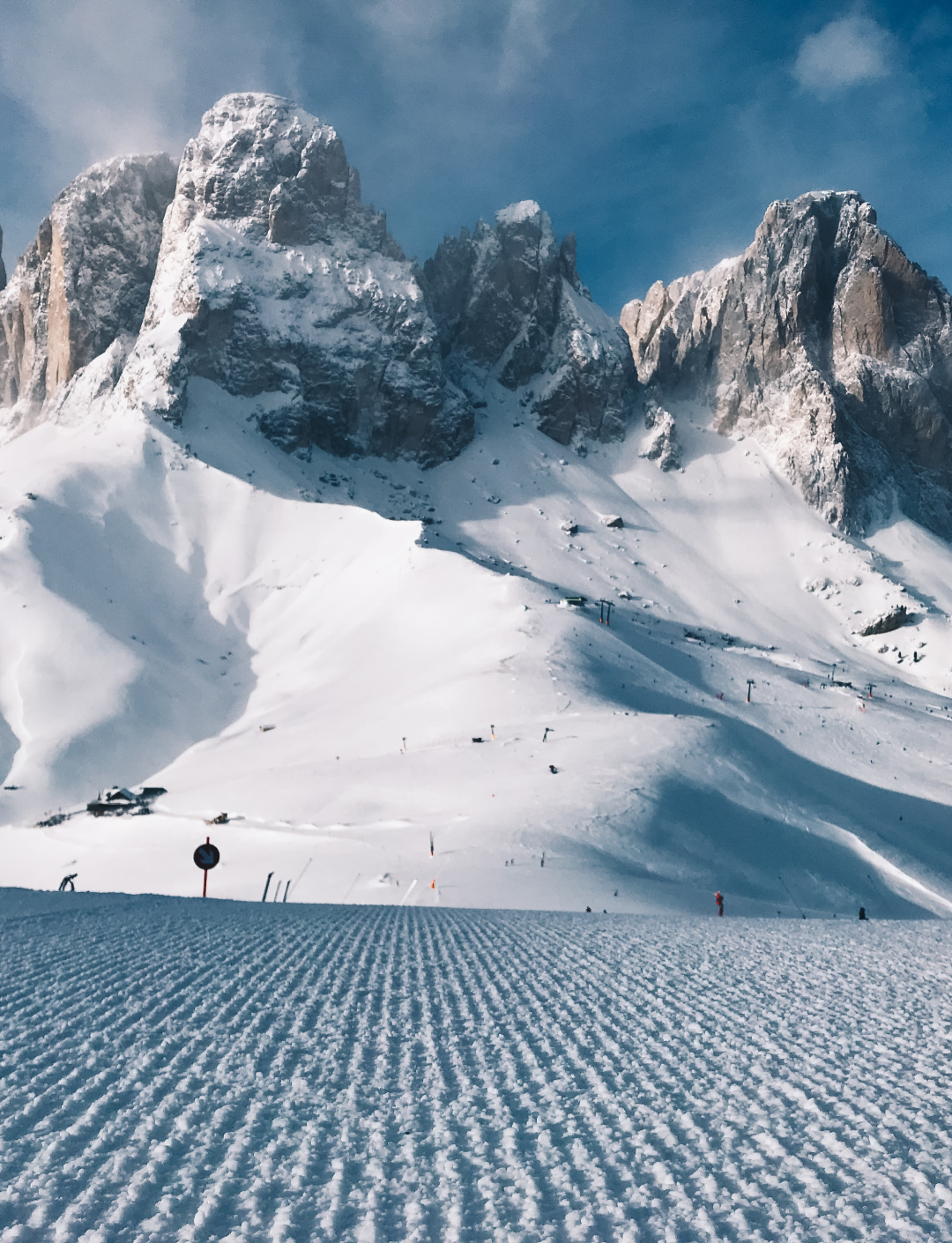Our friends at Giro have provided some answers to the most Frequently Asked Questions about helmets. Everything you evwanted to know about choosing and maintaining the best helmet for you can be found below.
Q: HOW EFFECTIVE ARE HELMETS AT REDUCING CHANCES OF INJURY?
Helmets are the most effective means of preventing, and reducing the severity of, riding-related head injuries (by anywhere from 45-88% of the most commonly reported brain injuries in action sports according to scientific studies). That said, there is no helmet that can guarantee the prevention of all injuries. Riding within your limits, and with respect to your surroundings, is an essential part of personal safety.
Q: HOW DO HELMETS WORK?
When you fall or crash and hit your head, a helmet’s liner compresses like an airbag to absorb energy, so that the brain doesn’t move around the inside of the skull with as much force. The addition of a rotational energy management system within the helmet – which is a growing trend in helmet design - can provide an additional measure of protective capability in certain impacts. By absorbing energy during the impact, a helmet reduces the likelihood of the most common brain injuries, such as concussions and hemorrhaging.

Q: WHAT’S THE BEST HELMET TO BUY?
The best helmet we can recommend is the one that fits your head comfortably and securely, offers the most coverage you’re comfortable with, and that meets the most relevant standards for the type of riding you enjoy. Design, features and price can also be considerations, but those are personal choices that we can’t provide guidance on.
By asking this question, we recognize that you may be seeking to understand what the “safest” helmet is. There’s a reason we can’t provide the simple answer you’re seeking: Every impact is a unique event, and we can’t predict how you’re going to impact the helmet. See “What’s the Safest Helmet?” for more information on this question.
Q: WHICH HELMET IS THE SAFEST?
The primary purpose of a cycling, snow or powersports helmet is to help reduce the chances of, and/or the severity of, head and brain injury from a fall or crash. So, the desire to understand which helmet(s) can provide the best protective capability is a common question.
Unfortunately, safety isn’t simple, and there’s a valid reason we can’t provide a simple answer to the question of which helmet is safest:
Every impact is a unique event, and we can’t predict how you’re going to impact the helmet.
The truth is that every fall or crash is a unique event defined by many variables. From rider mass and velocity, to surface friction and density, to temperature, to biological variances and more – there are a huge range of factors that prevent us from knowing exactly what will happen when you fall. And it is important to understand that there is no single helmet that can prevent all potential injuries.
Helmet testing provides us with data that demonstrates how effective a given helmet can be at managing energy across the scenarios outlined in various helmet standards test protocols. We impact about 200 helmets of each model during development to understand how that shape works to the various worldwide standards and to our own internal standards. We aren’t allowed to share our test data (keep in mind there would be hundreds of documents for each model) with the world however, as this information is considered proprietary.
We completely understand the desire to know which helmet is “best”, but even with test data this would be misleading. Each accident is different, and in some accidents the “better” helmet from one scenario may not work as well as one which had slightly lower marks.
Nearly every type of activity has a standard that we test to, and those test results can be taken as a predictor of the helmet’s potential to help reduce the chances or severity of injury. But that data is not equivalent to a guarantee, because there is no way to correlate the test results directly to every crash.
This also relates to why helmet manufacturers don’t share test data. For all of the work that’s done in good faith, and with proper protocols and controls in place, even the test results can vary slightly from one test to another. Relying solely on test results to rank or score a helmet’s “Safety” could lead to assumptions or even claims that would be irresponsible to publish.

Q: WHAT IS A “MULTI-IMPACT” HELMET?
Some helmets are referred to, or claim to be designed for, “multi-impact”. There are two reasons why we do not claim that any helmet is truly a “multi-impact” helmet:
- No helmet that we know of, regardless of the liner material or construction method used, can offer unlimited multiple-accident protection.
- There is no way to predict how hard you might hit your head the next time you fall, so we believe that it is best to wear a helmet that has not been impacted previously.
The bottom line is that if a helmet is involved in any serious impact, it should be inspected and replaced in case of any doubt, even if it appears undamaged.
Q: WHAT HAPPENS DURING AN IMPACT?
There are two main forces that a helmet is designed to manage during an impact:
Linear forces can occur when your head is moving in a straight line and comes to a sudden stop or is struck by an object moving in a straight line.
Rotational forces can occur when your head is struck at an angle or rotates quickly and comes to a sudden stop. This can cause the brain to twist within the skull.
During an impact, the helmet’s shell and foam liner help to dissipate the forces that can be transmitted through the skull to the brain. Additionally, rotational energy management systems may move inside the helmet, in order to redirect and reduce the amount of rotational force that could be transferred to your brain. Straps and fit/stability systems may also be engaged to help the helmet stay securely on your head, allowing the helmet to perform its job as intended.
Q: CAN A HELMET PREVENT CONCUSSIONS?
There’s no single helmet design or technology that can completely protect against concussions. There is only this one truth:
less is more. That is, less energy transferred to your brain during a crash equals more protection for you. Helmets are engineered to reduce as much energy as possible for the activity they’re designed for, while meeting and exceeding stringent safety standards.

Q: ARE MIPS-EQUIPPED (OR SIMILAR SYSTEMS) HELMETS SAFER THAN HELMETS WITHOUT MIPS?
Helmets are designed to reduce as much energy as possible while meeting and exceeding stringent safety standards. Through our extensive trials, we believe that helmets equipped with MIPS can provide an additional measure of protection in certain impacts. However, every crash is different, making the individual results difficult to quantify.
For more information on this topic, see “WHICH HELMET IS THE SAFEST?” for a detailed answer to the question about comparing helmet performance
Q: IS MIPS THE BEST ROTATIONAL ENERGY MANAGEMENT SYSTEM?
There are several technologies being commercialized to address rotational violence from impacts including MIPS, 6D, Flex and more. Over the last several years we have tested and helped to develop several technologies that can address rotational energy. Each technology comes from a point of view on how to best address the energies that can cause brain injury. At this time, we will not offer a point of view on which technology is best, because, as we have noted throughout this site, every impact is a unique event.
We can tell you that MIPS is a leading slip plane technology developed by scientists at the Karolinska Hospital and the Royal Institute of Technology in Stockholm, Sweden. The concept is based on 19 years of academic research, and we’ve spent several years collaborating with the designers of this technology while evaluating other approaches to managing rotational energy from impacts as well.
Based on what we have observed from our own testing and from review of MIPS’ data, we believe that helmets equipped with MIPS can provide more protection in certain impacts. Research into the effectiveness of this technology, and how to further improve it, is ongoing and we are at the forefront of this work. For now, we are believers in the potential of this technology to enhance protective capability of helmets.
We have also played a role in the evolution of MIPS and the development of the Flex system used by Bell for powersports helmets. The Flex system uses a segmented liner to achieve an adaptive fit for a wide variety of head shapes and a combination of polymer materials to provide a “progressive” energy management system that’s designed to help absorb low, mid and high energy impacts and can help to address rotational energies as well.
Q: WHICH HELMET STANDARD IS THE BEST?
There are many different standards that help to define helmets, based on the specific activity and user they address. Each standard has a unique set of criteria too, based on research or other factors that can influence the development of the standard. Based on the variety of activities and design criteria, our point-of-view is that there is no single best standard.
For more information on the standards for cycling, snowsports and powersports, as well as a deeper discussion, we recommend that you visit our “Standards” section on Helmetfacts.com to learn more.
Q: HOW CAN I MAKE SURE MY HELMET FITS PROPERLY?
Proper fit is essential because the helmet’s performance can be compromised if the helmet doesn’t fit properly. Getting a proper fit is easy if you follow the steps:
Determine Your Size
To determine the correct size, you should measure the circumference of the head. To do this, just wrap a measuring tape around the head, keeping the tape just above the ears and level front to back. Once you’ve determined the correct measurement, you can select a helmet in the correct size or size range.
Put The Helmet on
Start by putting the helmets on and checking to make sure the helmet fits comfortably and securely. Helmets with a fit/stability system should fit with just a little room between your head and the headband when the fit system is loose. If it does not, you should replace it with one that does. Helmets without a fit system (pads only, such as a full face helmet) should fit snugly but comfortably.
Once on and adjusted, a helmet should fit snugly on the wearer’s head, so that the skin on the forehead moves slightly when the helmet is moved back and forth. It should not cause a headache or be uncomfortably tight. You should always wear the helmet positioned low enough in the front to protect your forehead, but not so low that it hinders your vision. A space of approximately 1 inch/2.5cm between the edge of the helmet and your brow is a good reference.
Adjust The Fit/Stabilizing System
For safety reasons, we recommend that you do not attempt to adjust the fit of a helmet while you are riding. To adjust the fit tension of the fit/stabilizing system while the helmet is on the wearer’s head, simply rotate the dial adjuster on the back of the system to tighten or loosen the fit as needed. You can adjust the fit even more on helmets with systems that offer height adjustment, which allows the helmet’s fore/aft tilt to be optimized. Simply move the system’s occipital pads (at the back of the helmet) up or down for comfort and best coverage. Experiment until you get a fit that is most comfortable.
Adjust The Straps at the Years
With a proper fit, the front and rear straps should join at a point slightly below the ears. To adjust the strap positioning, open the adjusters on the straps around the ears, put the helmet on and slide the straps through the adjusters until they are located comfortably under the ears. Make sure there is no slack in any of the straps. Finally, make sure the adjusters are secured.
Adjust The Helmets Chinstrap and Buckle
It is important that the chinstrap is comfortably snug and sits back against the throat, NOT on the point of the chin. It should be snug enough to prevent rolling-off, but loose enough so that the rider is able to open their mouth wide enough to eat. Make sure the loose ends of the strap pass through the rubber O-ring near the buckle. If it does not, the strap may slide loose and the helmet can come off accidentally.
Check For Proper Fit
Once you think a proper fit has been achieved, grab the helmet with both hands and twist lightly it to the left and right. If the helmet fits properly, the skin on the forehead will move as the helmet moves. If it does not, the helmet is too loose. Next, grab the helmet with both hands and try to remove it by rolling the helmet forward and backward. THIS IS IMPORTANT. If you can roll it off the head completely, roll it forward so far that it blocks vision, or backward far enough to expose the forehead, it doesn’t fit correctly.
If you cannot adjust the helmet to fit properly according to these instructions, DO NOT USE THE HELMET. Replace it with a different size or model.
Once you are satisfied that the helmet fits correctly and that all straps are properly adjusted, take a short test ride. Make any minor adjustments to improve comfort and stability.

Q: WHAT IS THE LIFESPAN OF A HELMET?
We make a general recommendation of replacing a helmet every three to five (3-5) years depending on use and handling. This is based on observation of the average user, and factors like wear over time, weather, handling, the potential for degradation from personal care products like sunscreen or bug spray, and the simple fact that helmets do improve over time. If you fall and the helmet is impacted, you should have the helmet inspected or replace the helmet immediately, even if no damage is visible. The reason is that helmet liners are made to absorb energy from impacts and they do this through their own degradation or destruction – like an airbag in a car. If the liner is compromised from an impact or other factors, it may not offer the full protective capability it was designed to provide.
Q: HOW SHOULD I CLEAN OR SANITIZE A HELMET?
You can do this in a few easy steps:
Cleaning The Helmet:
Helmets are generally made of materials that can be damaged by many commonly-available cleaners. Petroleum-based solvents or cleaners are especially dangerous. They can damage a helmet so that its protective capabilities are significantly reduced. Many times this damage is not visible. For best results, clean the helmet using a soft cloth or sponge, warm water and mild soap (such as a mild dish soap). Allow the helmet to air dry and then store it in a cool, dry place where it won’t get damaged.
Lice Removal:
If you are concerned about lice infestation, here’s a simple, effective way to get rid of them: Step 1 - Do not use a spray of any type. Step 2 - Place the helmet into an airtight plastic bag for 48 hours. Then, remove the pads and use a soft cloth or sponge, warm water and mild soap to clean the surface. Step 3 - Discard the pads and plastic bag (keep bag out of reach of children due to suffocation hazard) and visit your local dealer or contact the manufacturer for replacement pads.
Q: WHAT IF MY HELMET IS DAMAGED, OR I AM UNSURE ABOUT THE CONDITION?
Helmets don’t last forever. Damage to a helmet is not always visible. If a helmet is visibly damaged (cracked outer shell, crushed or cracked foam liner or any other damage) don’t use it. Some or all of the helmet’s protective capacity is used up when impacted.
If at any time you are unsure or have questions about your helmet’s condition, we recommend that you visit your local retailer or contact the manufacturer before riding with it.








